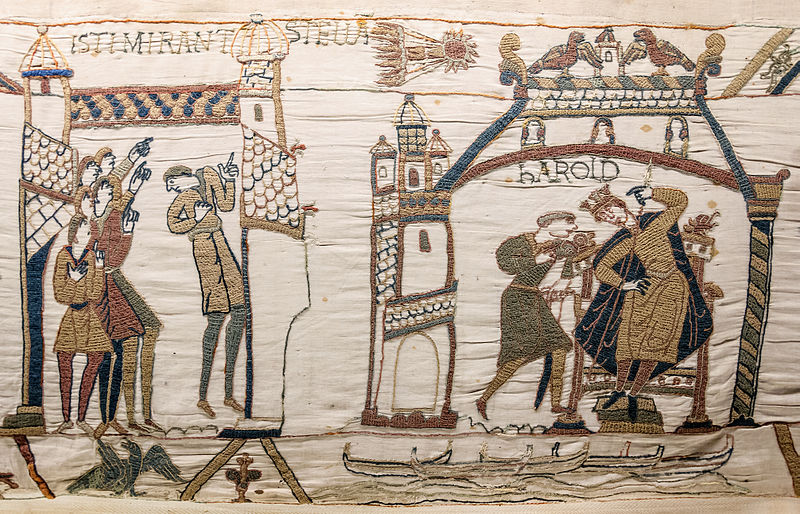You
may have noticed people wearing dark glasses in the news recently. They were
attempting of course to look at the sun. The great shining light bulb in the
sky that we long for and hide from in equal measure. They were waiting for the
solar eclipse, when the sun was only visible by its outer rays – when darkness
and cold descended during the day. A natural phenomenon that reminds us that we
are dependent upon the movement of our planet and the position of the sun and
moon for our experience of light and dark, for our experience of time.
It
was for some a religious experience: an experience of transcendence that
reminds us of our dependence upon the created universe. People were awed,
shocked, could only exclaim: ‘Oh, my God!’.
I’ve
been to France for my holidays and whilst there we visited the Bayeux Tapestry.
In the tapestry, you can see a drawing of Halley’s comet. It was read as a
harbinger of defeat for the upstart Harry. A sign of his infidelity. An omen
for the people.
 |
| The Bayeux Tapestry, Halley's Comet, https://commons.wikimedia.org/wiki/File:Bayeux_Tapestry_32-33_comet_Halley_Harold.jpg |
The
similarity between these two events, and the great chasm of time between them
struck me. It made me think about how we read our times – and how we make
judgements about light and dark, truth and lies, about the actions of those in
authority. Harry had been sent to Normandy by King Edward to tell William that
he was the rightful heir to the English throne. On his death however, Harold
had been crowned King. William, commanding an army sails to England to
challenge Harold and claim the throne. William wins and is crowned King. The
tapestry tells the tale and sets it within its wider astrological context.
Today,
we continue to live our lives within the context of those who fight for, win
and lose power over us. Except it’s worked out through the ballot box rather
than the battle field; is re-set as a political question and answer, through
the arrows of twitter and the duals of televised political debates. Like those who lived in Normandy and England
before us we must learn to discern the truth from the lies, the betrayers from
the faithful.
For
Christians, finding out what is the will of God is inseparable from recognizing
Jesus as Lord. Jesus is effusive when Peter says that he is the Messiah the Son
of God: ‘Blessed are you Simon, Son of Jonah…. You are Peter and on this rock I
will build my church, and the gates of Hades will not prevail against it’.
Today,
as in every age, we must hang onto Jesus if we are to separate the light from
the dark, the truth from the lies. And it is Jesus’ character revealed in his
actions that testify that he is the Son of God. His qualities should guide us
as we assess and judge the world around us: humble, compassionate, peacemaker,
breaker down of boundaries, challenger of the powerful, guardian of the poor
and vulnerable, host for the outcast. As Christians we have a certain and clear
moral compass and a faithful and true leader whom we follow. The Word of God
and the power of God can be manipulated and used in all sorts of ways, to
justify all sorts of appalling actions. The faithful and true will be proven by
their works. If we keep looking to Jesus, we will be exposed to the greatest
light that there ever was and is.
As
Christians we keep on looking at the Son – and we don’t need dark glasses. He
shines out for us for ever and ever, only once eclipsed by those who could not
bear his light, only to rise again more glorious than ever.
Bible References:
Romans 12:1-8
Matthew 16:13-20

Comments
Post a Comment
Please be respectful when posting comments